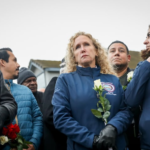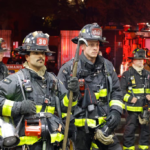By Fauzia J. Choudhury
Since the beginning of the twenty-first century, anti-Muslim sentiments and Islamophobia have developed significantly in Western countries. Following the terrorist attacks of September 11, 2001, there has been an increase in anti-Muslim hate crimes, particularly in the United States (ADC-RI 2008). In my paper, I want to briefly discuss Muslim women who are one of the most vulnerable groups in the Muslim community. Discrimination against Muslim women is a crucial part of Islamophobia. We can divide the group of Muslim women further into groups based on their race and how visibly they look Muslim.
According to one expert, Muslim women who wear headscarves are more likely to encounter discrimination than those who do not: 69 percent of hijab-wearing women reported at least one discrimination event, compared to 29 percent of non-hijab-wearing women (ACLU 2021). I am not staggered by the statistics. My friends and family have experienced discrimination at school, work, and other public places. Muslim women who wear hijab are particularly vulnerable to prejudice. As a result of their prominence, and have become more targets of harassment in the aftermath of September 11 (ACLU 2021). Through the lens of social identity theory, it puts many acts of hate crime into perspective. Social identity theory analyzes the relationship between two groups. The theory suggests people build self-esteem by placing a higher value on their social group than on outsiders. Non- immigrants feel a sense of fear around immigrants because they have a fear of losing their ranks in society. Unfortunately, Muslim women of color wearing hijab suffer at a bigger scale than others. The challenges from outside of their community were not enough that Muslim women are also facing challenges from their people in the community. In a fascinating case from 2010, an employment tribunal was held after a Muslim lady was fired from her job because she refused to wear a hijab to work (Tariq & Syed 2017). Hence, more discrimination against them.
Nowadays, any information spreads like a fire in the forest. It is an advantage in our society. But the issue arises when information turns into misinformation. We are living in a digital world. Every piece of information is known by the audience and critiqued by the audience. In my paper, I will discuss the biases against Muslim women in the platforms like newspapers, news channels, and other old digital media platforms. And on the other side of the story, modern digital platforms allow more space to have a judgment. The image of Muslim women in the West is said to be heavily skewed and fabricated. Racism and ethnocentrism have stained the image (Rahman 2012). Newspapers and channels are a part of the problem. Their narrative on Muslim women has shaped the idea of who they are in western countries. One of the most common arguments, Muslim women wearing hijab. When discussing “the rights of Muslim women,” for example, the news discourse frequently focuses on symbolic and theological concerns such as the veil or Islam, obviating more essential topics relating to these women’s equality, such as their right to education or civic freedoms (Navarro 2010). Western media has portrayed women wearing hijab as taking away their freedom without knowing the significance of it. I do not wear a hijab. However, people around me have commented many times, “you are not like other Muslims, at least you have your freedom, you do not look like other Muslim women.” I do not blame them for these comments. The root cause behind it is the lack of education about Islam in the community. Western media has more to speak about Muslim women than they do.
People are consuming content through various platforms. Modern-day media platforms like social media, Twitter, others have been more vocal about the discrimination. Communities have opportunities to stand up for themselves. It has a more positive impact on the community because there is more space for freedom of speech. The recent ban of hijab in France has been disappointing news in the world. Unfortunately, the West does not perceive a woman as liberated without letting go of religion’s shackles. The majority of Muslim women, on the other hand, perceive their freedom in practicing their religion (Rahman 2012). The French Senate is considering a bill that would make it illegal for girls under the age of 18 to wear the hijab in public. All over the world, people started protesting against the ban physically and on famous social media platforms like Instagram and Twitter. People were taking a stand against this act of discrimination by showing support using the hashtag #HandsOffMyHijab. We have witnessed both positive and negative impacts of digital media. However, the adverse effects of misusing these big platforms are undeniable. Hate speech, which we face as a social issue, has become the ‘infectious disease’ of today’s media (YARDÏM 2015). It is fueled by social structure, culture, and politics, and can be found in a variety of forms in French and Belgian francophone media (YARDÏM 2015). Social structure, culture, and politics help us shape our society. People in power are misusing their position and the impact is explicitly visible. People’s point of view changes due to a lack of understanding about Islam and what they see on their screens. For example, in the Netflix show, Elite, Nadia took off her hijab and ran away with her boyfriend was in a way representing her “freedom” and a false representation of Muslim women. They were trying to showcase that after removing her hijab, she was free from oppression and being submissive. Furthermore, showing how Nadia, an oppressed girl, needed a white character to “save” her. The representation of Muslim women speaks volumes. 78 percent of Europeans believe that Islam does not treat women equally and that as a result, Muslims oppress and exclude women from social life (YARDÏM 2015). For the rest of it, we barely see any ideal representation of Muslim women in the movies. They are portrayed as oppressed or, there is no representation at all. According to UCLA’s recent “Hollywood Diversity Report,” 84 percent of directors are white men, with zero Muslim women in the director’s chair in 2019 (Zawahry 2020). Other movies like “Sex and The City 2” misrepresent Arab Muslim women. The movie boasts about feminism but lacks inclusivity in it. Again, the portrayal of four white women shows sympathy to those helpful women on their trip to UAE. In 2019, Rihana’s Savage X Fenty show blew up everywhere. People were praising her for showcasing empowerment due to her diversity in the cast. However, she was called out for making her models wear a clothing item very close to wearing a hijab while wearing the lingerie. Western media is always making the same mistake of confusing the idea of empowering women and wearing a hijab in the Muslim community. The idea of liberation looks different for every individual. Nadia from Elite taking off her Hijab does not empower her or, four white women in the movie showing “empathy” to the women or, neither does Rihana make her models wear lingerie and hijab together.
I do believe many Muslim women face oppression within my community. I have witnessed it within my family too. I am not in a place to speak about an experience a woman wearing a Hijab goes through because I do not wear one. At the same time, it is wrong on the western media for portraying an image of oppressed Muslim women. It is a choice of wearing a Hijab or not. They are maybe oppressed. But due to other reasons like not getting a job because of them visibly looking Muslim, mistreatment in public places, and other consequences faced by Muslim women. In our society, there is a lot of misleading information about Islam and a lack of representation. The biases and the lack of representation have been hurting the community through and through. The discrimination has been transforming into cases of harassment and assaults against them. In 2006, a Muslim woman’s head covering was identified as the reason that triggered the incident in 154 occurrences of discrimination or harassment (ACLU 2021). The negative portrayal of women wearing Hijab has been an obstacle in accomplishing their dreams in society. According to a survey released by the Department for Work and Pensions, Pakistani and Bangladeshi ancestry women have the highest unemployment rates (9.8%), followed by Chinese (9.5%) and Indian (5.4%), while White British men (4.9%) and women (4.5%) have the lowest jobless rates in the UK (Delebarre 2016) (Tariq & Syed 2017). It clearly states how Southasian women are struggling in getting jobs in these so-called progressive countries. Muslim women are more likely to encounter discrimination and problems as a result of their intersectionality than women from other ethnic backgrounds (Wallis and Robb 2013). The journey becomes more complicated if you do not have enough protective factors around you. For example, support of your family, social and emotional competence, and other protective factors. Opportunities are limited for Muslim women of color if they do not have agencies to navigate through them. It shows how Muslim women of color have to walk the extra mile to achieve their goals. Hence, it leads to my point of due to the lack of support, affects the lack of representation of Muslim women of color.
Women deal with multi-layered aspects of life, according to Crenshaw (1989), and there are no one-size-fits-all versions of feminism (Tariq & Syed 2017). Western media needs to put a full stop to defining or putting Muslim women in a box. No one has a right to talk about their standpoint on religion other than themselves. Neither do they need white feminists to talk about their struggle. They need their space to tell their stories. We’ve proven that women of South Asian Muslim ancestry continue to encounter multi-faceted concerns and hurdles in their quest for work and leadership, which they try to navigate using their distinctive abilities and agency (Tariq & Syed 2017). On the same digital platforms where people have narratives about Muslim women, I have also witnessed the same Muslim women creating their narratives. Digital media could be a powerful tool if people use it responsibly.
References
1. Discrimination against Muslim women – fact sheet. American Civil Liberties Union. (2010, December 14). Retrieved November 3, 2021
4. Navarro, L. (2010). Islamophobia and sexism: Muslim women in the Western Mass Media2. ScholarWorks at UMass Boston. Retrieved November 3, 2021
5. Tariq, M., & Syed, J. (2017, March 25). Intersectionality at work: South Asian muslim women’s Experiences of Employment and Leadership in the United Kingdom. Retrieved November 3, 2021
6. Wallis, H., & Robb, S. (2013, December 7). Workplace discrimination prompts “whitened” job applications. BBC News.
7. YARDİM, M. (2015, October). Hate Speech against Muslim Women: The Example of French and Belgian Francophone Media. Aijssnet.com. Retrieved November 3, 2021








